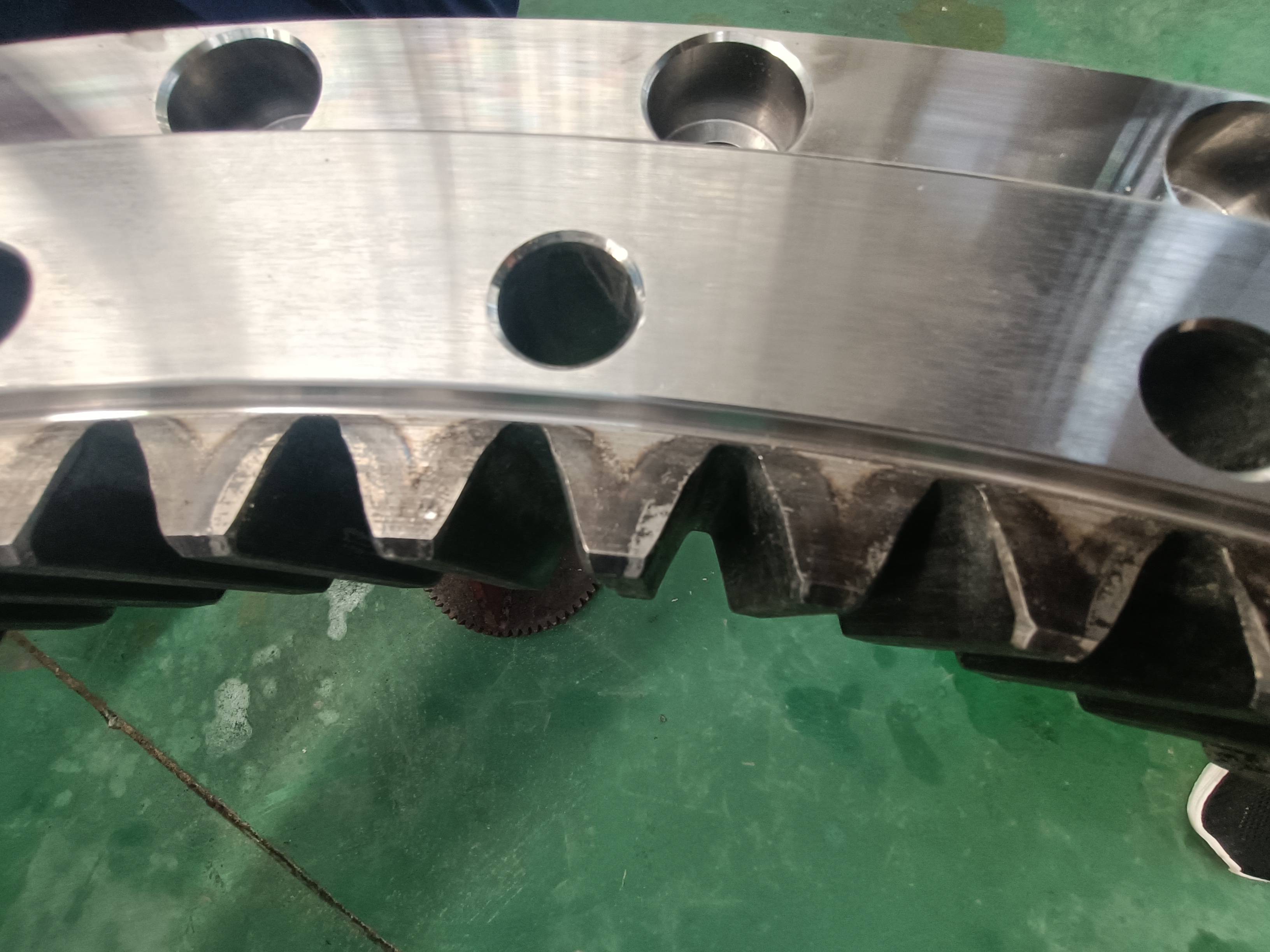Newsroom
Heat Treatment of Slewing Bearings
2024-09-20In the production of structural components, heat treatment is a crucial process that primarily serves to enhance the mechanical properties of materials, eliminate residual stresses, and improve the machinability of metals. This is particularly important in the manufacturing of slewing bearings. This article will provide a detailed introduction to the heat treatment process of slewing bearings, focusing on the heat treatment of raceways and gears.

I. Heat Treatment of Raceways
The raceways of slewing bearings are typically subjected to surface induction hardening treatment. This process ensures that the hardness of the raceways reaches HRC55-62, thereby guaranteeing sufficient depth of hardened layers to meet high strength and wear resistance requirements. Depending on different designs and application needs, the raceways of slewing bearings can be categorized into several types:
1.Single-row four-point contact ball raceway: This design is suitable for bearing large radial and axial loads, offering good stability and load-bearing capacity.
2.Double-row tapered roller raceway: This structure effectively distributes loads, making it suitable for high-load applications.
3.Single-row crossed roller raceway: By arranging rollers in a crossed manner, it increases the contact area, enhancing load-bearing capacity.
4.Double-row tapered roller nose raceway: This design provides better rigidity and stability, suitable for dynamic loading conditions.
5.Triple-row roller nose raceway: Suitable for applications requiring higher load capacity and stability.
Through these different types of raceway designs, heat treatment processes can be tailored to enhance their performance to adapt to various complex application environments.

II. Heat Treatment of Gears
Gears play a vital role in transmitting forces within slewing bearings; thus, their heat treatment status is crucial. Typically, gears undergo normalizing or quenching treatment to enhance their overall performance. The gear surface can be quenched according to user requirements, with quenching hardness generally between HRC50-60, ensuring sufficient depth as well. Depending on different application scenarios, gear quenching can be divided into full tooth quenching and single tooth induction hardening, with single tooth induction hardening further subdivided into root quenching and surface quenching.
1.Full tooth quenching: Suitable for gears that require overall hardening to improve wear resistance, ensuring each tooth can bear the same load.
2.Root quenching: Special treatment on the root part enhances its bending strength and overall strength.
3.Surface quenching: Primarily targets the hardening of the tooth surface to improve wear resistance while maintaining the toughness of the root section.

Importance of Gear Heat Treatment
Heat treatment not only improves the hardness of gear surfaces but also significantly enhances their wear resistance, effectively preventing wear due to friction. Additionally, by generating subsurface compressive stresses, it can effectively reduce pitting and deformation caused by high contact stresses, thus extending the fatigue life of gears. These characteristics make heat treatment an essential process for ensuring the long-term stable operation of slewing bearings and their related components.
Conclusion
In summary, through scientifically reasonable heat treatment of raceways and gears during the production process of slewing bearings, not only can the mechanical properties of materials be improved, but also significantly extend product lifespan. With technological advancements, future heat treatment processes will become more refined to meet increasing performance demands and application challenges.


